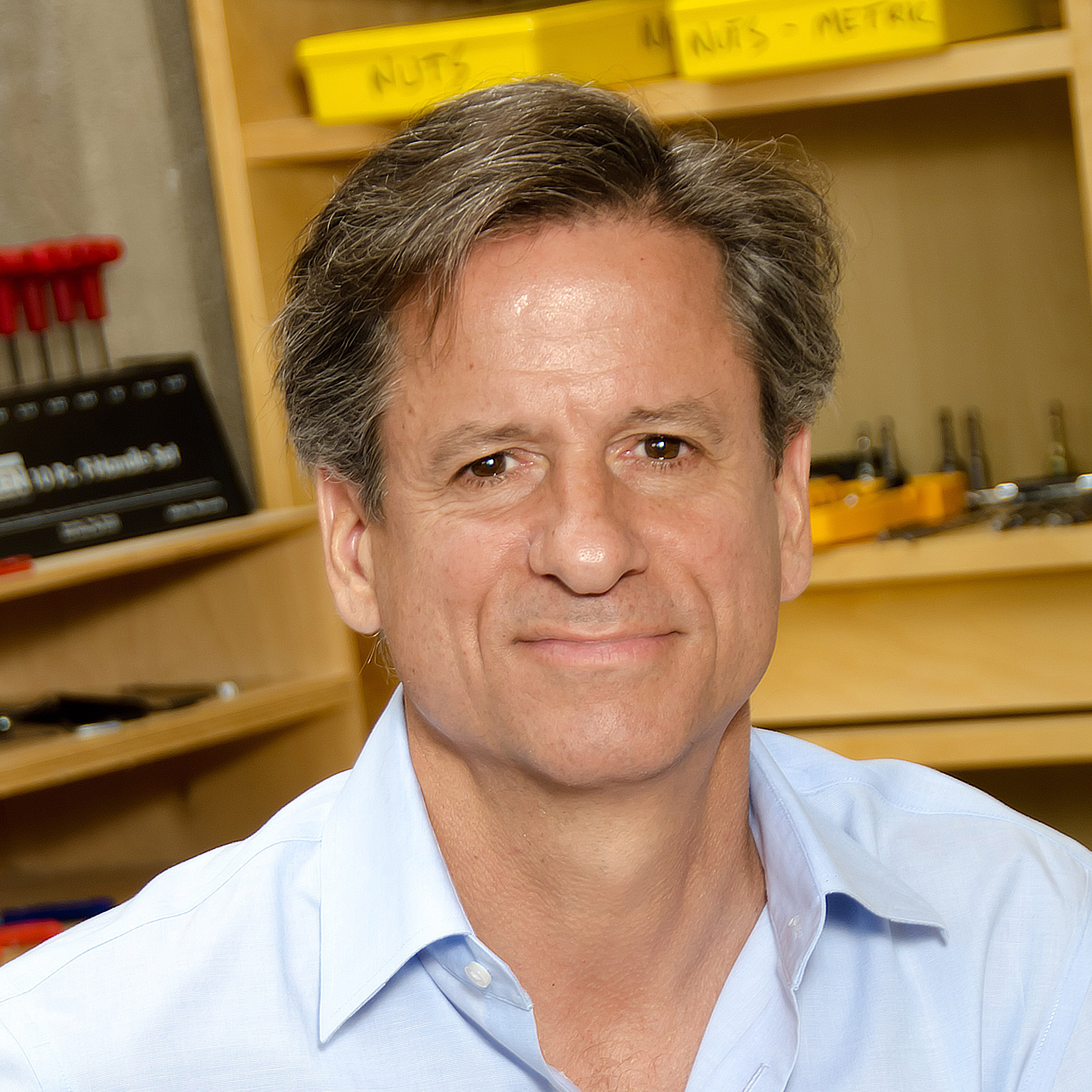 Henry Thorne
Henry Thorne
Entrepreneur-in-Residence
Henry Thorne has always thought he could make anything work. If he had to, he could make a rocket that could go to the moon. Luckily his mom moved him to Soho in NYC when he was 12 and it was bordered by Canal Street on the South which was chock full of surplus stores of every piece of material and mechanism you can imagine, it was a giant tinker toy set to him and he set about making things, lots of things. Henry’s favorite was a pin ball machine with an air hockey table and puck instead of just a ball, it was lightning fast, and beautiful. His head was full of designs all day and he built them, lots of them.
That world in him head finally merged with the educational one at Carnegie Mellon in the late 70’s, a place where the field of Robotics was getting hatched. He made robots ever since, the more complex the better.
The first robotic system he set up at the bottom of Hammerschlag Hall welded randomly placed pipe saddle joints. There were a lot of contributors, but he was responsible that it actually worked and wrote the core code at the heart of it called the reverse kinematic solution. It was the perfect experience for him because it forced him to make the math and code match the physical reality, and that physical reality was full of complexity way beyond the base geometry. He fought those battles, and won, for the most part, ever since.
Henry made the first large scale arc welding assembly lines at General Motors in the mid 80’s inventing automated tool center point calibration to get it to work. He set off in the early 90’s to start his first business consulting back to GM and creating systems he could sell them to make their robots work better. Henry created the first graphic user interface on industrial robots which ABB bought from him and installed on thousands of robots for GM. Henry’s most popular industrial robot system is his single beam tool center point calibration system which he still sells today.
In the mid 90’s he created the first personal robot, Cye. It could vacuum and cart goods around your house or office. Although he only sold 750 of them, it was enough of a breakthrough that Wired magazine called it the Mac of Robots which was precisely what he was trying to create. Henry turned it into the “Tug” selling it to hospitals from his third company, Aethon. Tugs pull carts around hundreds of hospitals now - autonomously delivering supplies then sitting themselves down on chargers in supply rooms.
In 2006 Henry founded 4moms, a juvenile products company, with Rob Daley. There he made some of the most complex mechanisms he has ever created, the most famous being the Origami power folding stroller and the most successful being the mamaRoo Infant Seat which has sold over a million units. But the most complex mechanism was the Breeze play yard. Even the simplest play yards have 23 independent links attached by 26 joints compared to just 7 and 6 for standard industrial robots. His most recent incarnation of this adds 16 links that coordinate the motion of the other 23 and all for a manufacturing cost under $50. Henry calls this play yard the “Fold” play yard and is starting a new company to sell it named “Thorne Baby.”

